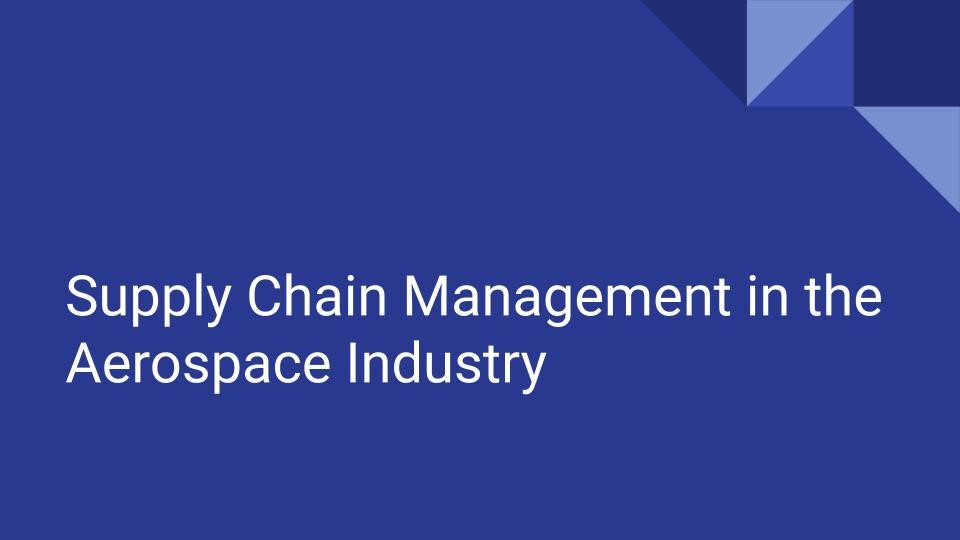
The Covid-19 pandemic has caused major disruptions to the aerospace and defense industry. The aim for many corporations now is to figure out how to recover and thrive from these changes in their schedule. With the need to be able to navigate the changes, the ability for organizations to pivot in order to thrive will be paramount to remaining profitable in the current era. With the pandemic, and the WHO mandates for social distancing, the commercial aerospace sector has significantly experienced a downturn in its operational activity. Identifying how to keep the industry afloat and also protect sectors such as the defense sector, will be one of the priorities for 2020 and beyond.
Consulting studies by leading firms have identified that there is an increase in defense sector related activity, while commercial activities have paused for the interim. With underlying security threats both on earth and in space, the defense sector has seen an increase in growth as organizations and governments are now being forced to increase their defense spending. The highest levels of growth is being experienced in emerging countries including India, and within the United States and China. With an annual spend in the trillions of dollars, the business seems to be lucrative.
Commercial aerospace was affected by production bottlenecks in 2019, which were further offset by travel restrictions in 2020. All industries do recover, and in the coming years, commercial aircraft is anticipated to undergo growth and expansion as restoration is underway. Aircraft companies will keep up with their demands, adapt to industry changes and also impact the aerospace supply chain.
With an upswing, there will be a need for improvements in supply chain management. As aerospace logistics and supply chain decision makers embrace the change, they must also ensure that they keep the good flow going. There will be challenges associated with growth that managers will have to keep up with.
Raw Materials Supply
The production of aircraft is a complex process that involves thousands of individuals and machined components. Material sourcing such as metal sourcing is key to sustaining the mechanical integrity of the various components. Where large scale manufacture, or the manufacture of large components such as rockets or planes are concerned, it will be important for on time delivery of the product or service. The availability of the vehicle for important missions to places like the International Space Station will be important and must be upheld.
With multiple supplier chains, there are often differing components that must be sourced. Non metal resources such as chemicals, rubber, wood, plastics and textiles have to be carefully negotiated in terms of quantity and sizing. Finding a supplier that meets quality, cost and delivery requirements is highly critical for the aerospace industry. Open sourcing of parts has made the procurement of the parts an international venture. Under our current operating regime, aerospace procurement directors will have to decide the suppliers (with adequate redundancy) who will enable the projects to be completed on schedule.
BALANCING THE SUPPLY
Incorporating redundancy into the system will be key to ensuring that short term supply disruption is achieved. Where possible, source parts on a monthly, quarterly and annual basis for short term project components. For longer term more critical components, it will be critical to ensure that organizations are able to secure 5-10 year contracts with primary and secondary aerospace suppliers. Having good relationships with the suppliers will ensure that costs are kept to a minimum.
EMERGING TECHNOLOGIES
The aerospace industry is one that is faced with digital disruption. As industry standards change, artificial intelligence and automation emerges, the industry will have to adapt itself to the changes. Where possible, new products are to be incorporated into future or existing designs. The key to new part integration is adequate testing in order to prevent system glitches. The industry is one that has to maintain a high safety record, and it will be important for this parameter to be sustained.
TRAINING OF STAFF
With anticipated production output on the commercial aspect of the aerospace industry, there must be an increase in the personnel who are involved in the manufacture of these aircraft. Mechanical skills are often in high demand due to the fact that many brilliant persons are opting to work in sectors such as the financial sector instead of in manufacturing. Encouraging people to actually work in STEM fields is something that has to be proactively pursued. The shortage of skilled workers will affect the production rate. Where training may be limited, it would be in the best interest of the organization to incorporate robotics into the mix.
With these critical parameters to contend with, the industry is well on its way to ensuring that the new demands will be met. The supply chain has various key elements, and with their adequate incorporation into the system, it will be possible to ensure smooth operations when the increase arrives.
